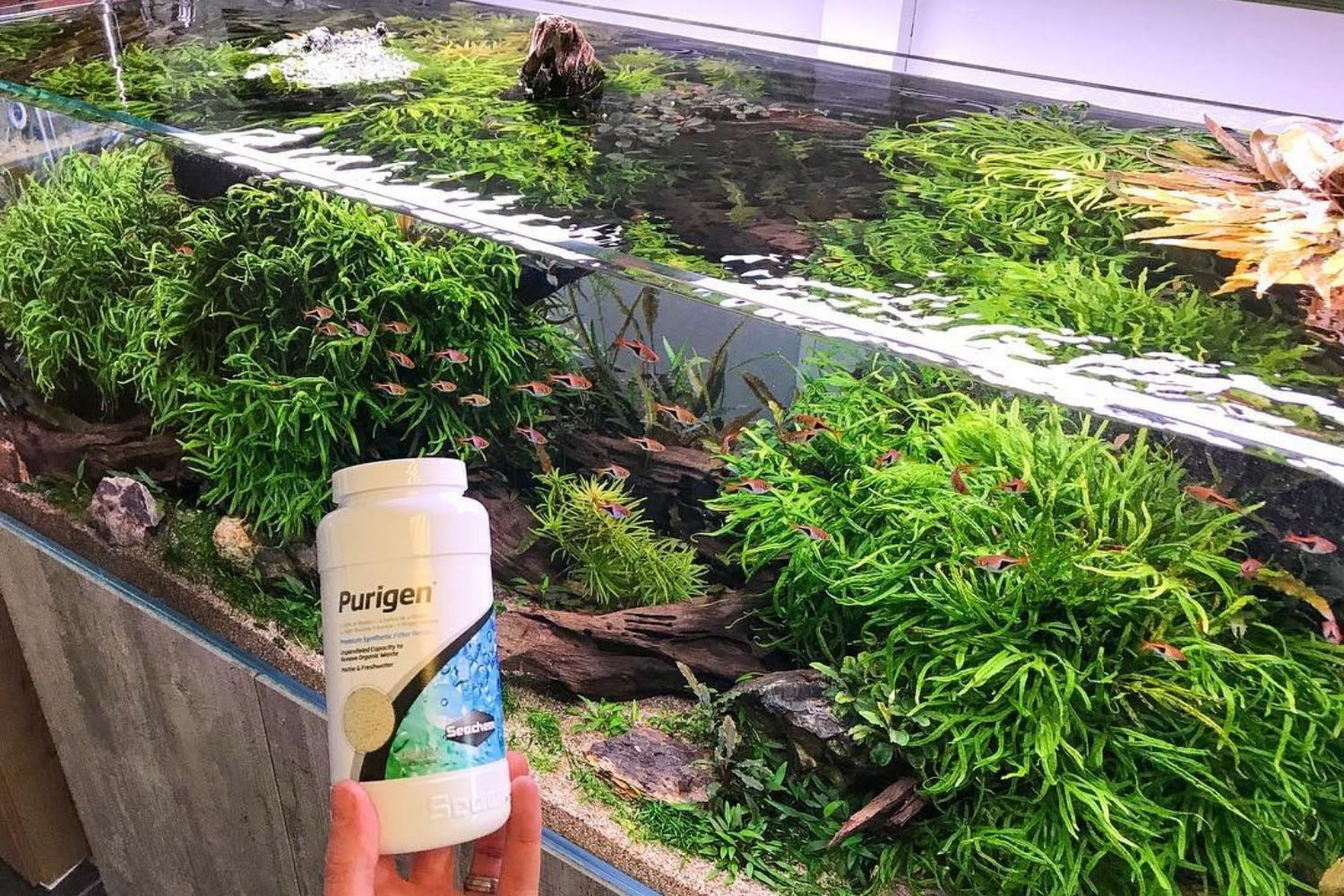Nitrates are substances commonly derived from fish waste. Due to high nitrate concentrations, tank water becomes toxic and unhealthy for the fish and plants alike living in the tank. Traditionally, nitrate is removed from the water by conducting water changes regularly. This method is relatively inexpensive and safe but often impractical and even ineffective. Especially when the fish you’re keeping produce excessive waste.
All you need in this case is the best nitrate remover for your freshwater or saltwater aquarium! In this buying guide will discuss the different types of nitrate removers available and help you decide which one is right for you. We’ll also provide a few tips on choosing the best nitrate remover for your specific needs. So read on to learn more!
- Best Overall: Seachem Purigen
- Runner Up: Fluval ClearMax Phosphate Remover
- Best Budget: Tetra Easy Balance Plus
- Best as Bio Media: Seachem Matrix
- Best Natural: Seachem Denitrate
- Best for Reef Tank: Red Sea NO3:PO4-X
- Best for Ponds: API POND AMMO-LOCK Ammonia detoxifier
Best Nitrate Remover Reviewed
We researched nitrate remover that not only removes nitrate efficiently but also lasts long and does not affect the water chemistry and pH. We prioritized those from reputable brands. All are awarded for their different specialties, to make sure we can cater to anyone’s priorities.
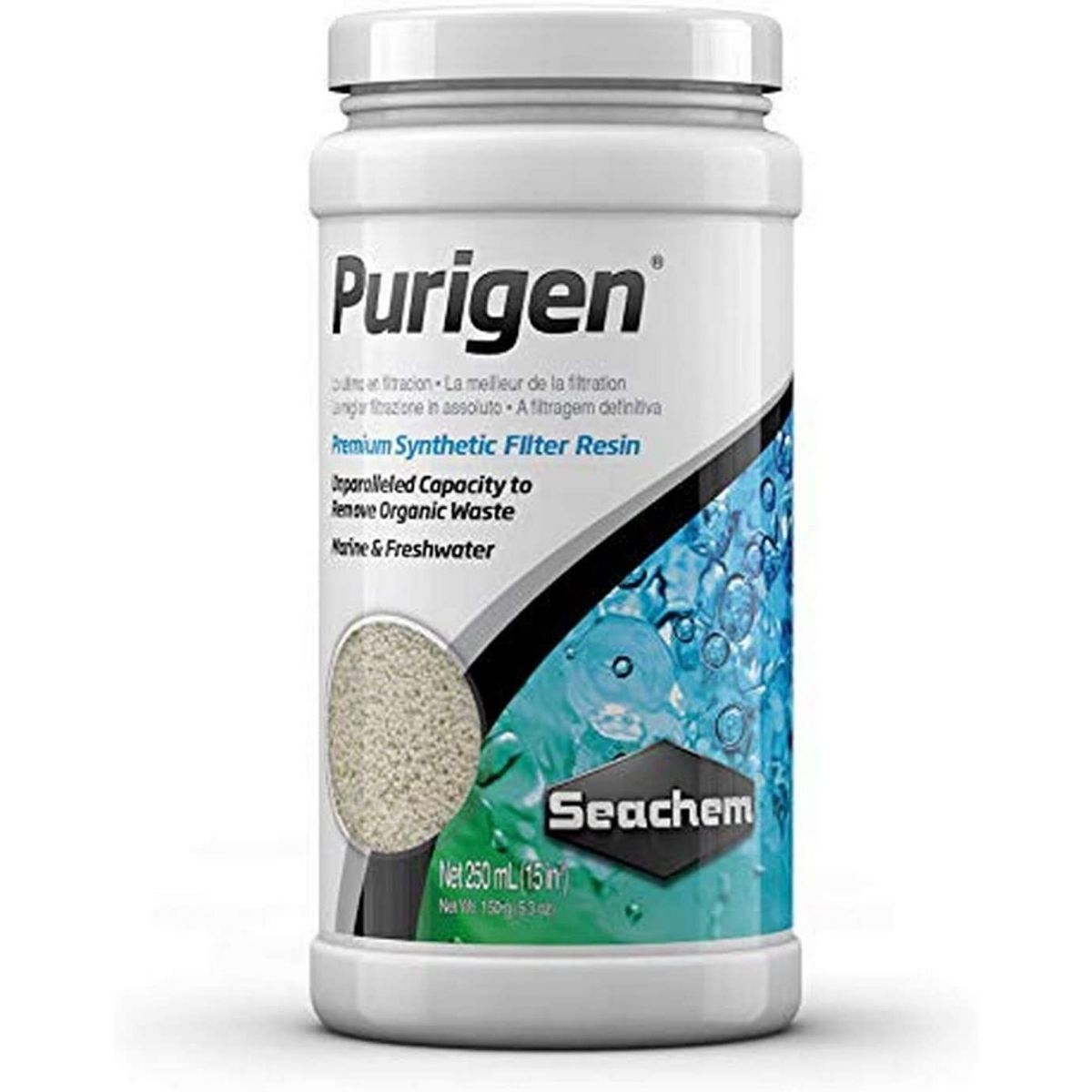
Seachem Purigen is a powerful synthetic adsorbent capable of removing many types of impurities from the water, including nitrates. This product is very versatile as it can be used in marine and freshwater tanks. It comes in the form of loose resin pellets that can be placed inside a filter bag.
One of the great things about Seachem Purigen is that it can be reused many times by simply regenerating it with bleach or vinegar.
Additionally, this product doesn’t only remove nitrates from the water but also phosphate and silicate. This makes it perfect for anyone who faces problems with algae growth in their tank due to high levels of phosphate and silicate in the water.
Seachem Purigen is very effective and it doesn’t change the chemistry of the water, which is why it’s our top pick for the best nitrate remover for freshwater tanks.
Pros
- Doesn’t change the chemistry of the water
- Can be reused many times
- Comes in the form of loose resin pellets
- Fast pacing
Cons
- Some customers find the pellets too small
Read More: Seachem Purigen Review
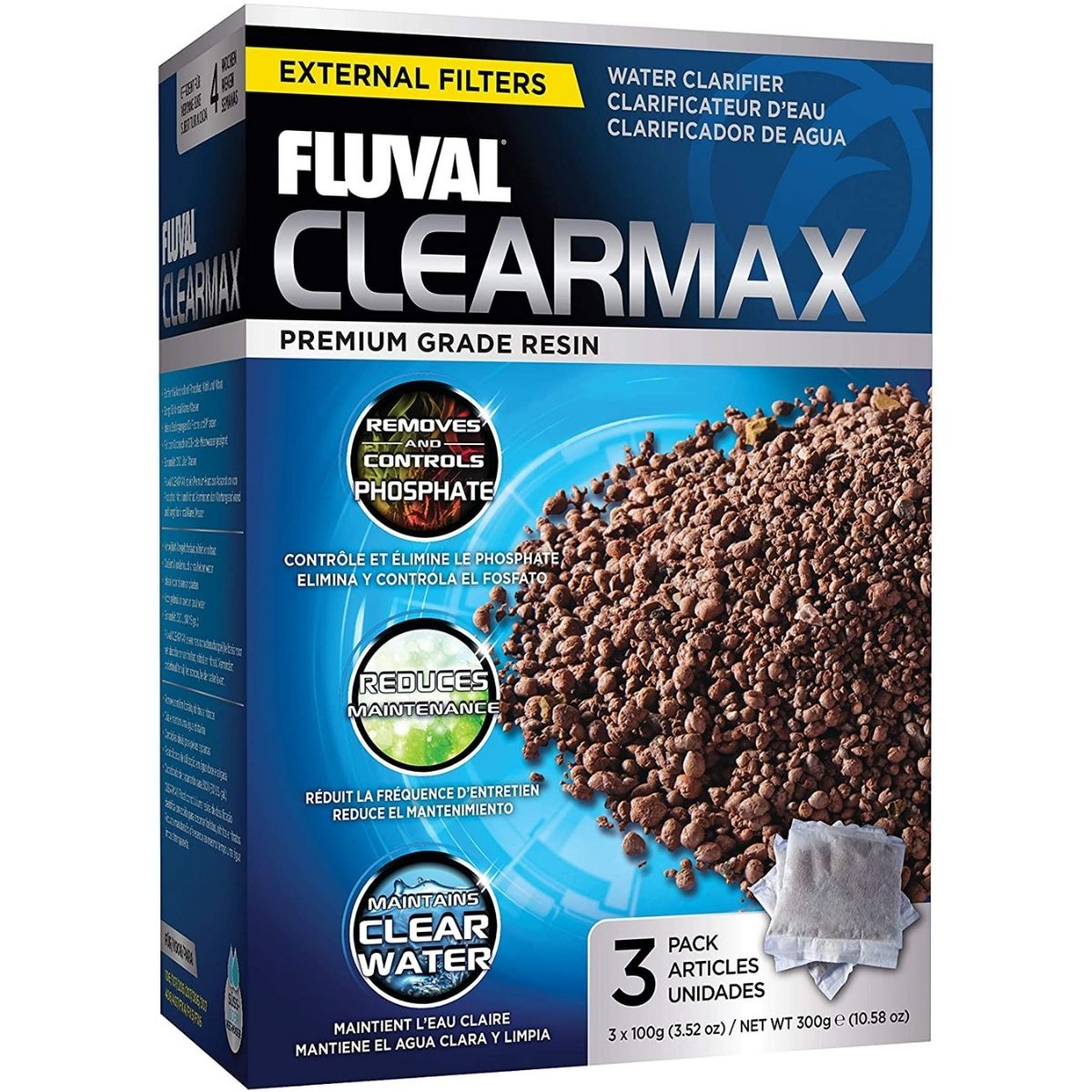
Coming in as the runner up on our list is the Fluval ClearMax Phosphate Remover. This product was designed to target and remove phosphate, a substance that can fuel the growth of algae in your aquarium and make the water look murky.
Fluval’s phosphate remover comes in the form of granulated ferric oxide, which is a type of iron-based chemical compound. This compound will quickly adsorb phosphate molecules from the water column and prevent them from being able to fuel algal blooms.
What’s more, the Fluval phosphate remover is extremely easy to use. All you have to do is add the desired amount of media to a mesh bag and place it in your filter flow path. The media will start removing phosphate from the water immediately and can be left in your filter indefinitely.
Pros
- Budget-friendly
- High-efficiency
- Reusable
- Prevents algae growth
- Easy to use
Cons
- May not remove other types of toxins or chemicals from the water
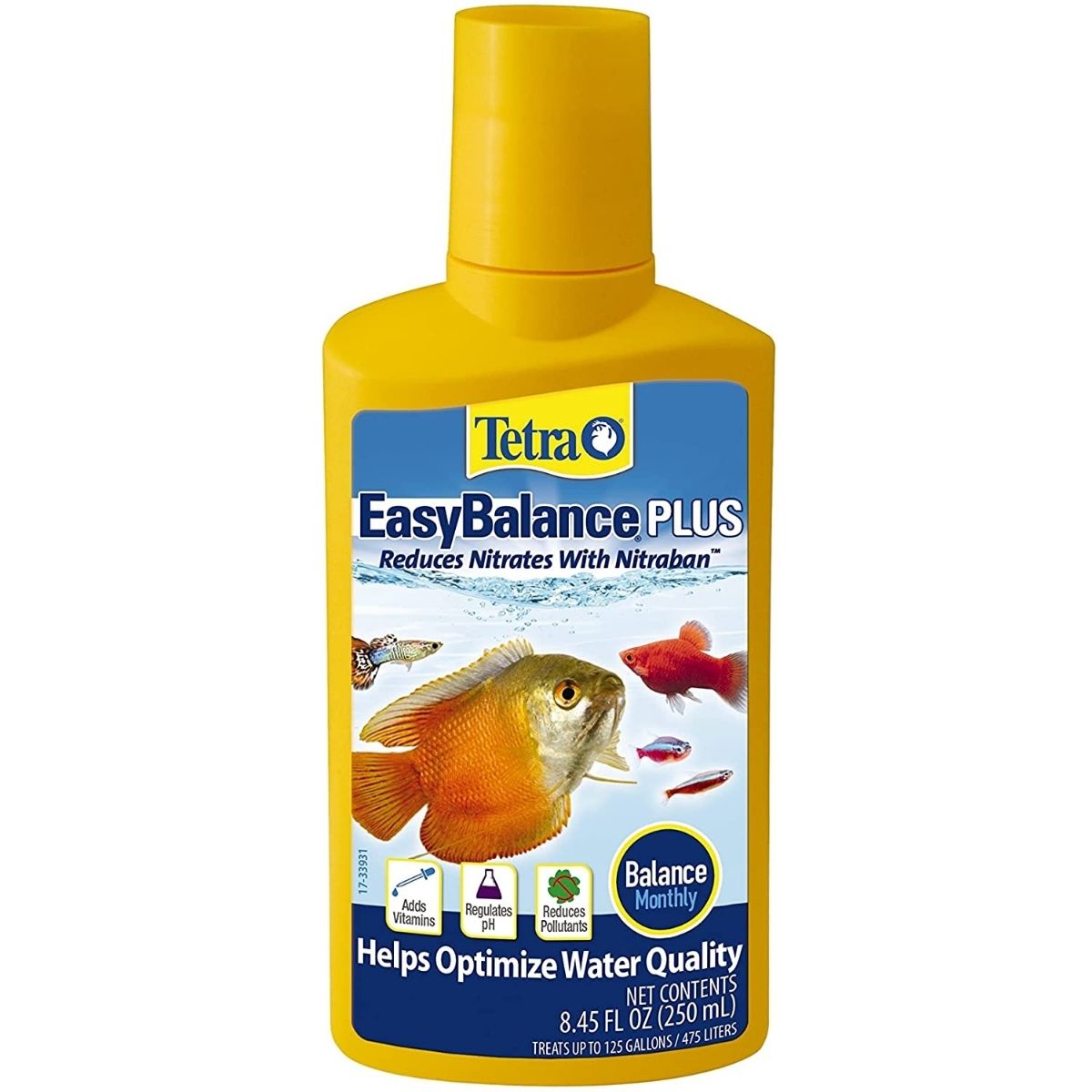
As the name suggests, the Tetra Easy Balance Plus seeks to provide an easy and budget-friendly solution for those who want to maintain a healthy aquatic environment without spending too much money.
The product is designed to last up to 6 months, which is longer than most other water conditioners on the market. It comes in a small bottle of 8.45 fluid ounces, which might not be enough for very large tanks but will suffice for most regular-sized fish tanks.
A routine is important while using this product: adding the easy balance to your tank more than once a month may disrupt the tank’s nitrite cycle and foul the water.
Measurements for proper conditioner usage are provided within the physical bottle itself. One capful for 10 gallons is the ideal ratio. If you use more in less water, you will notice the water turning cloudy for a few hours up to a day, which can be scary but will not be harmful to your fish as long as you remain mindful.
Pros
- Maintains balance
- Efficient
- Doubles as supplement
- Optimizes pH balance
Cons
- Might cloud the water if too much product is added
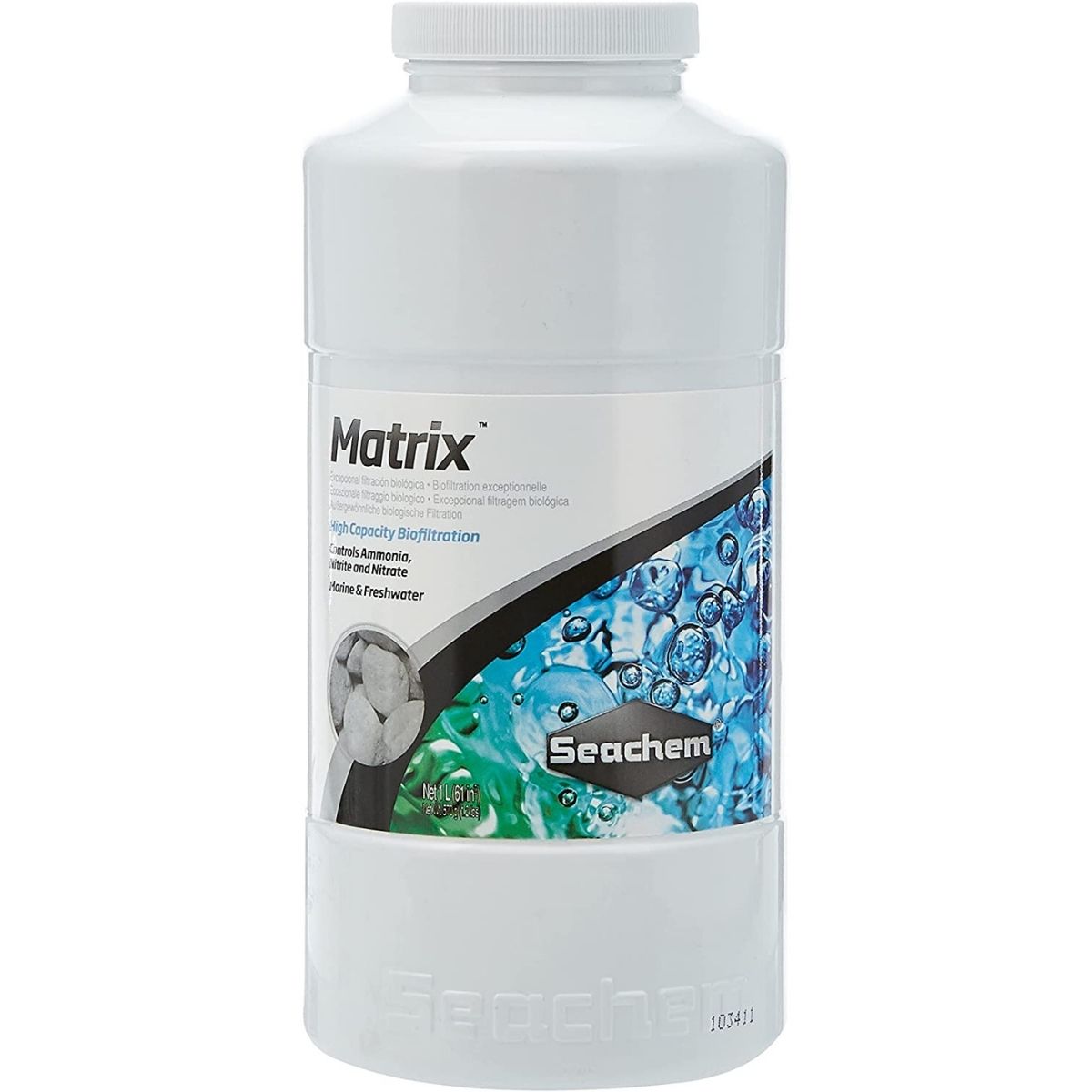
Seachem Matrix Carbon is a special activated carbon in the form of spherical balls, which helps to optimize its structure in terms of hydrodynamics. High-density macroporous binding sites ensure excellent flow and contact with water.
Other than being an extremely effective nitrate remover, Seachem Matrix is also very safe for your fish as it is made of 100% natural volcanic ash. It will not alter the pH of your water or leach any unwanted chemicals, making it a great choice for those who are looking for a natural solution.
Seachem Matrix has the lowest detectable phosphate content of all its competitors. This carbon-based macroporous bituminous allows water to infiltrate thanks to its size, large enough not to slip out of the filter bags.
Pros
- Biological-based
- Permanent solution
- Good price point
- Won’t alter the pH of the water
- Made of 100% natural volcanic ash
Cons
- Designed for canister filters
- Needs establishment time
Read More: Seachem Matrix Review

As we talked about before, denitrifying bacteria is one of the most effective ways of removing nitrates from a freshwater tank. Seachem’s Denitrate is a product that comes in the form of porous media, which provides an excellent surface for these bacteria to live on.
With little pumice, oxygen gets depleted, resulting in ideal environments for anaerobic pockets. Seachem Denitrate functions perfectly as both basic biological filtering media and as nitrate remover due to it being a dual-use media.
The main difference between this product and the Seachem Matrix is the decreased size of the pumice, which makes them more fitting inside your power filters. Seachem products have the great advantage of being available both online and in physical stores.
Pros
- Fits in power filters
- Long-lasting
- Biological-based
- Easy to use
Cons
- Requires establishment time
- It is not suitable for very small tanks
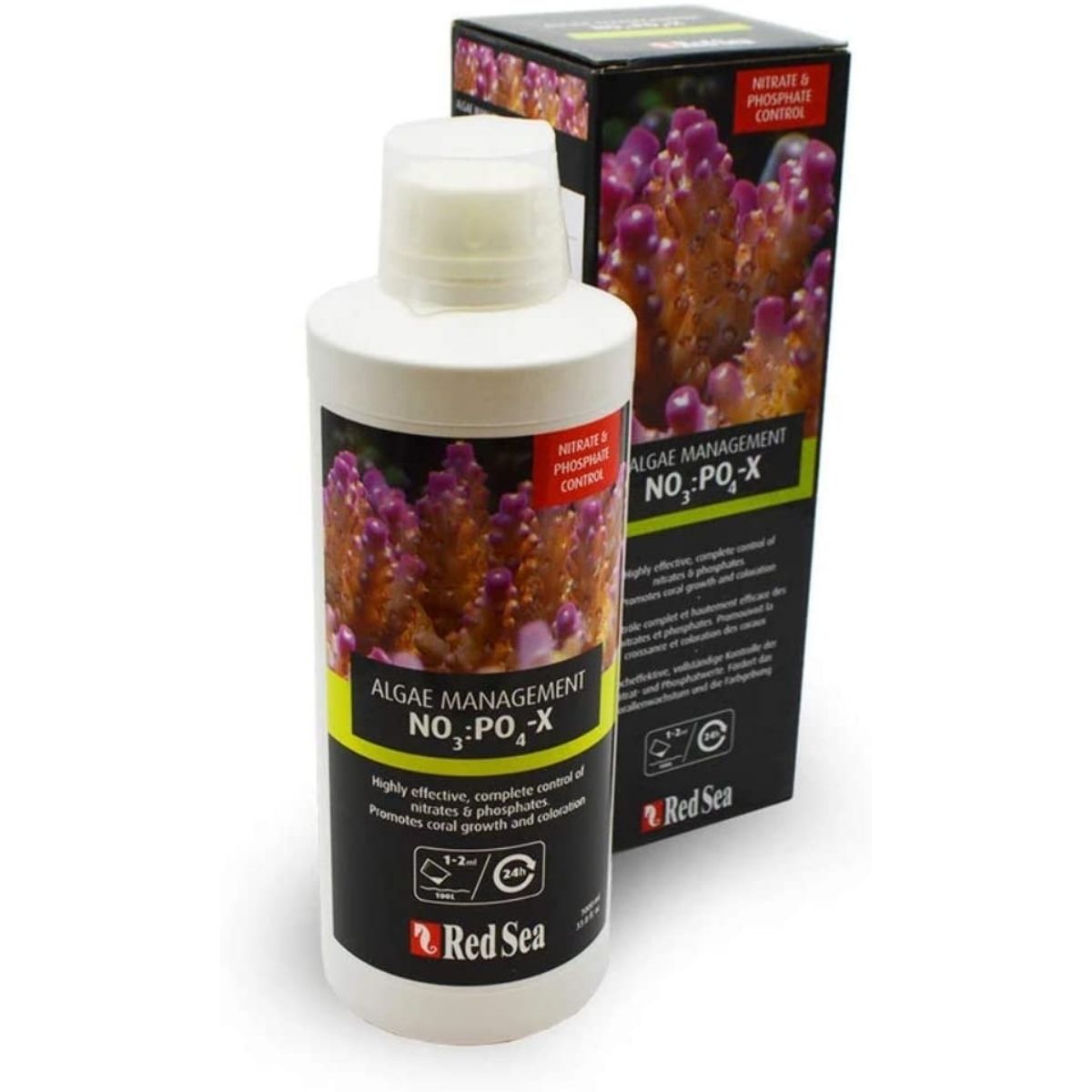
If you’re an avid reef keeper, you’re probably familiar with the importance of keeping your levels of phosphates and nitrates as low as possible. The Red Sea NO3:PO4-X is a product that has been designed to lower these levels in reef tanks while maintaining a high level of coral growth.
This nitrate remover is able to do its job without lowering the pH or alkalinity levels in the water, which is essential for the health of corals. It is one of the best solutions for removing nitrate and phosphate from reef tanks, keeping toxin levels at a minimum, and promoting coral growth and coloration.
This original formula is the safest for removing phosphates and nitrates, two of the most common types of impurities found in reef tanks. The result of using the product will be beautiful, vivid, and strong corals.
Pros
- Complete and safe
- Nitrate reduction
- Phosphate reduction
- Efficient
Cons
- You need to be careful with the dosage
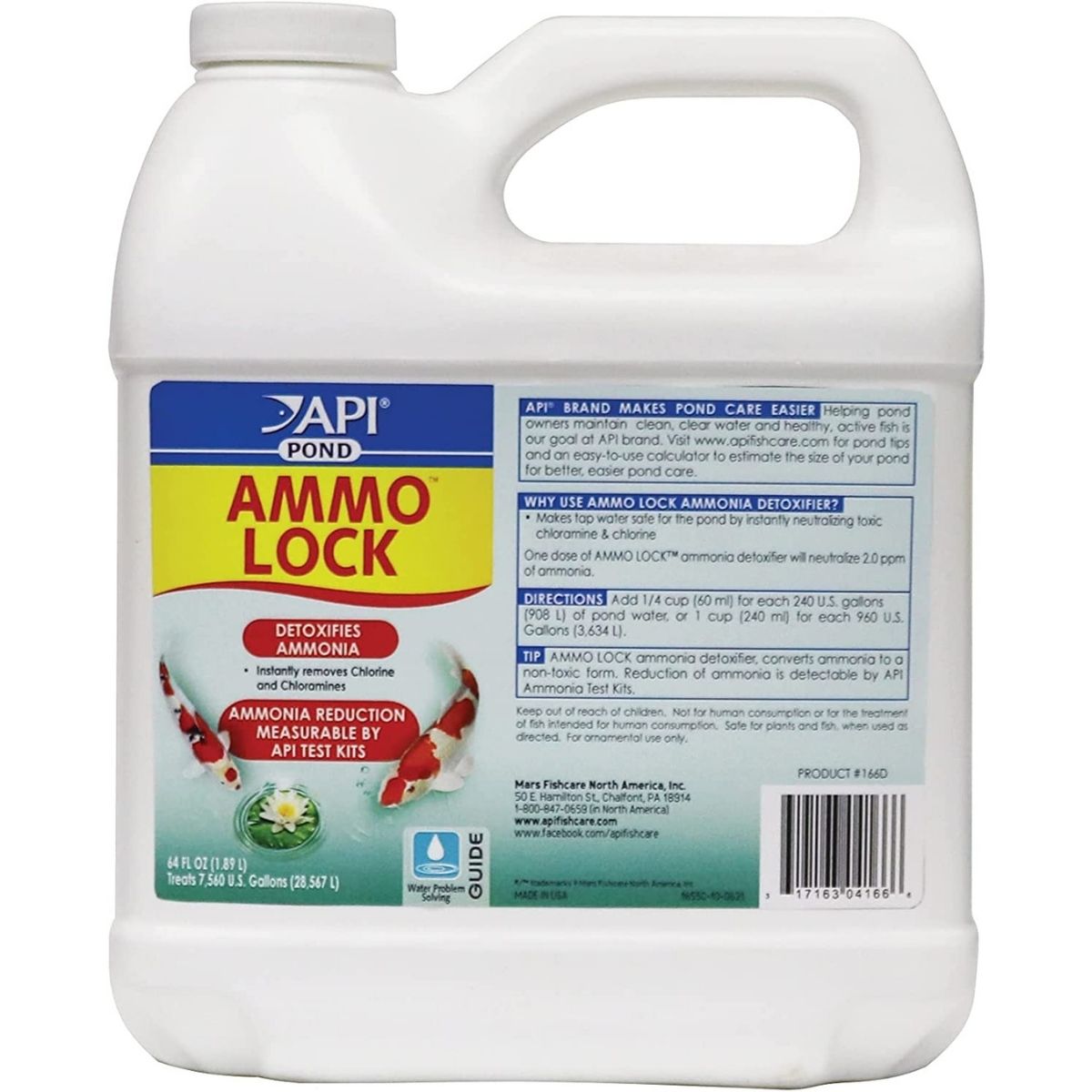
API POND AMMO-LOCK Ammonia detoxifier is a water conditioner that is highly effective in ammonia detoxification. It is the ideal solution for tap water tanks and decorative ponds.
This product can detoxify ammonia from the water while also helping to prevent the growth of algae. It is completely safe for all fish, plants, and animals that might be present in your pond. It will also serve as a nutritional supplement for the bacteria living in your biological filter within the tank or the pond.
The results of this product are instant, as it removes any stress caused by heightened ammonia levels in the water while also promoting the gill health of pond fish. It comes in a very large container which will last you a long time, and it only needs to be used once a week. This makes it extremely convenient and easy to use.
Pros
- Works instantly
- Converts ammonia into nutrition for good bacteria
- Promotes gill health for pond fish
- Removes ammonia stress
- Large container
Cons
- Can be dangerous if not used cautiously
How to Lower Nitrates in a Fish Tank
The safe nitrate level in an aquarium depends on a few factors, including the type of fish you have and the other inhabitants of your tank. If you have sensitive fish, or fish that are prone to diseases, you’ll want to keep your nitrate levels as low as possible.
In general, a safe nitrate level for most aquariums is between 20 and 30 ppm.
There are Inarguably many traditional and modern ways with improved technological features that help maintain the cleanliness of an aquarium. In this section, we will detail some of the most popular ways to remove nitrates and toxins from your aquarium.
Nitrate Removers
When discussing how to lower nitrates in fish tank waters, our best and most reliable recommendation is nitrate removers. Nitrate removers are filter media that, when added to a tank, ensure that a chemical or biological process will result in the removal of nitrates.
The media itself can be disposable or permanent, and it is not harmful or dangerous to your fish as it is placed well inside the filter itself.
Different media types can be useful in removing different types of impurities, like mixed media that can remove more than just nitrates and carbon or resin that provide the same effect.
Using nitrate removers is our favorite way of removing impurity from a fish tank. It is very hard to imagine a scenario in which the method could be dangerous for your tank’s fish.
On the other hand, it is a practical and time-saving way of making sure any aquarium stays clean since you don’t exactly need to do anything except take the media and place it in its designated area inside the filter.
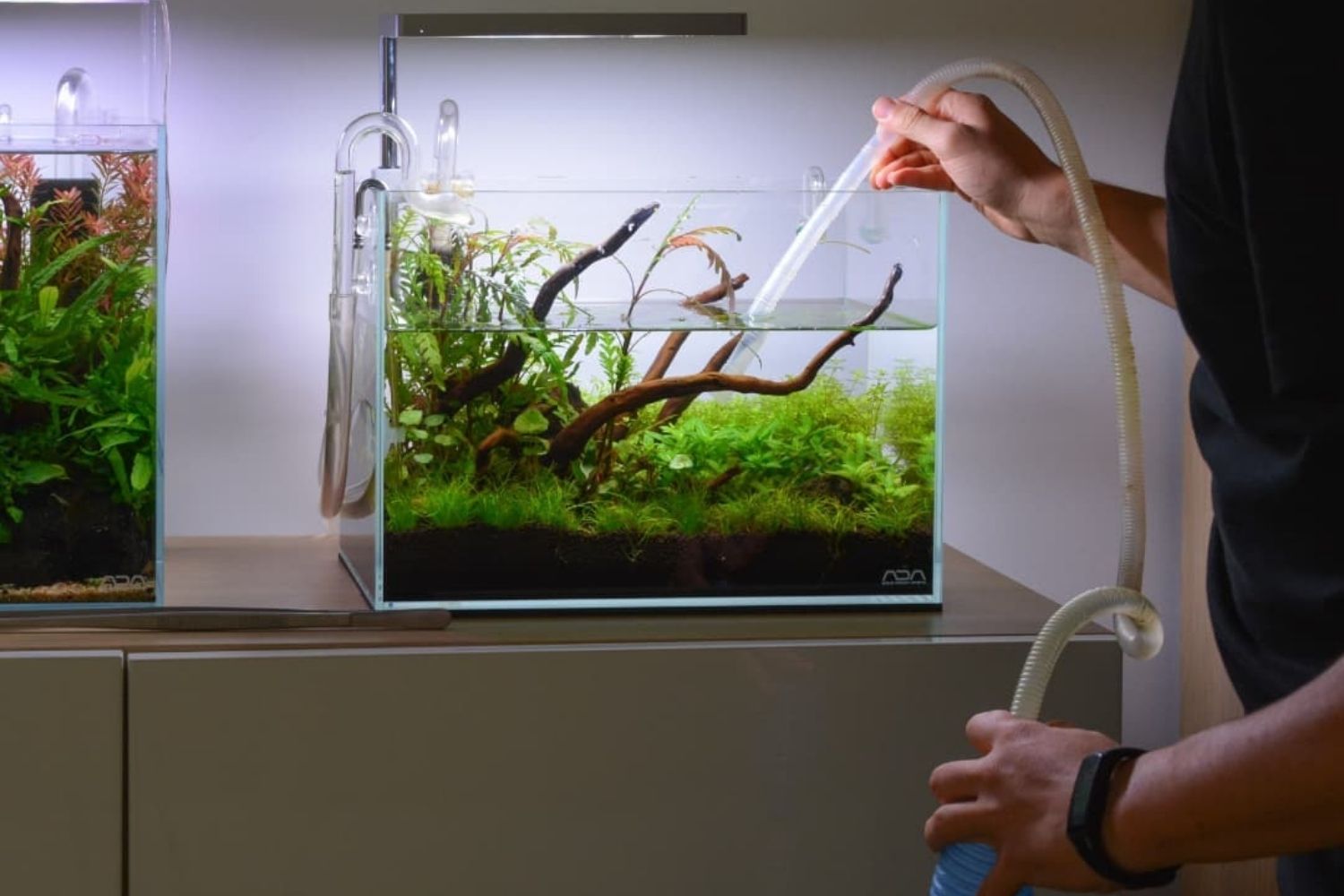
Water Changes
The most basic and traditional way of cleaning most impurities from an inhabited fish tank is by conducting water changes.
Water changing is when the fish keeper will drain a tank from a portion of the water – depending on the percentage of the water change- and replace whatever was drained with clean and fresh water.
The method is pretty inexpensive and most effective, but there are some cons. Firstly, it is pretty hard for a tank to replace the number of beneficial bacteria it loses during a water change. This can prove to be stressful for the fish since their water quality will inevitably change, and it is dangerous for any plants inside the aquarium which thrive due to the good bacteria in the water.
It is tedious work: we understand the dedication any fish keeper wishes they could show their fish tank, but sometimes it is impossible to drain and replenish tank water every week with a busy schedule.
It is not 100% effective since partial water draining is not guaranteed to remove the correct amount of nitrate from the tank. Complete water changes shouldn’t be made more often than once a month to avoid losing precious beneficial bacteria.
Live Plants
A slightly more creative way to remove nitrates from a fish tank can be by adding live plants to the environment. In planted tank setups, this is a good solution. The method also works great with peaceful fish that do not cause a stir inside the tank.
That brings us to the most important con to this method which is the lack of adaptability. In case the fish like to eat the plants, or they are very messy and dirty fish in general such as bettas, only placing some live plants in the tank will certainly not do much for the cleanliness of your aquatic environment.
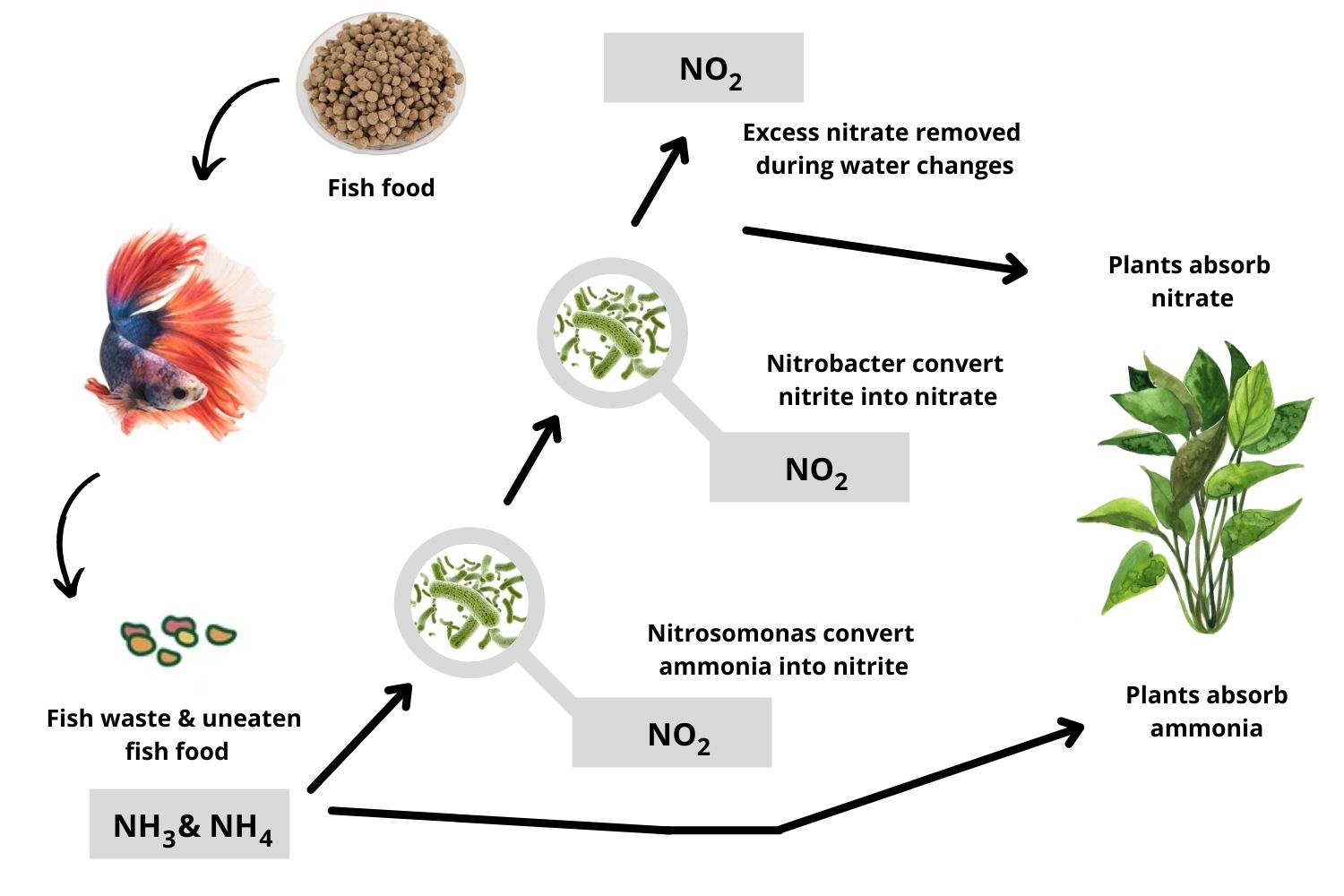
What to Look for When Buying a Nitrate Remover
If there are still some questions you may not have answered yet about what type of nitrate remover to purchase, we have a shortlist of factors to consider when shopping for the best nitrate remover.
Effectiveness
Depending on the breed of fish you are taking care of, you will be faced with various types of impurities in the water. Different types of filter media are capable of catching many types of these impurities, and it is important that you choose a nitrate remover that aligns with your specific requirements.
Safety
Sometimes, filter media may cause a chemical reaction in the water. If your passion for caring for fish stems from a desire to create peacefulness and relaxation in your daily environment, it is essential to make sure that your precious fish are kept safe.
Whatever a brand might claim, it is always important to do extensive research to get all the necessary information on the product you’re purchasing and its potential impact on the aquarium.
Price
Given that you have listed a few alternatives of nitrate removers that you like, each of them checking all of your important boxes, the last-but-not-least thing you need to consider is the product’s price.
There are extravagant products in the market that will try to sell you a product twice or three times its true value, but that’s not necessarily something you have to settle for.
Good and effective nitrate removers can be found at a budget-friendly price range with only a few google searches. Keep on reading to see our list of recommendations which include budget alternatives for nitrate removers!
Filter Media or Water Conditioner?
The differences been filter media and water conditioners are typically shown depending on the tank you’re working with. For large tanks of more than 50 gallons, given that you face a pretty powerful filtering system installed, filter media could do the trick perfectly. Resin pellets can also come in handy if you own a bioreactor, as they are suitable for setups with high levels of ammonia.
Otherwise, if you’re treating smaller tanks of about 15-20 gallons, you may find water conditioners as a better alternative. Essentially, water conditioners are substances that break down toxins and dangerous chemicals in the water due to their enzymes. They make a perfect solution for somewhat smaller and cleaner tanks, where there isn’t a very high volume of harmful substances in the water.

Our Verdicts
In the end, it’s important to realize that all nitrate removers essentially do the same thing. As long as they’re safe, you won’t make a bad decision regardless of which product you choose.
Our team has worked hard to select all the better products on the market and review them to bring you a complete review of the best nitrate removers. If you’re looking for an all-rounder, the Seachem Purigen is the better choice out of all. It’s affordable, works great, it’s easy to use, and doesn’t cause any irreversible damage even if used too much or too little.
Depending on preference, the Fluval ClearMax Phosphate Remover can be just as good as the Seachem, if not better. It possesses the same qualities and is a runner-up simply because it tends to remove necessary nitrate if you’re not careful. However, our team found that that’s on very rare occasions.
We also chose a budget pick for you: Tetra Easy Balance Plus and also a reef tank and pond alternative in case that’s your specific scenario. That doesn’t mean that the other options aren’t just as good for reefs and ponds; however, our picks are more case-specific.
How We Chose the Best Nitrate Removers
We’re sure you’d like to know how we came to choose these the best nitrate removers. A couple of the people on our team have researched the subject, picked the best products, and reviewed them all in a few weeks.
They chose the best performing products and awarded each of these with a different thing they excelled at. Remember that all these companies we selected from aren’t affiliated with us, so our judgment is most certainly objective and based on our team’s experience and professionalism.
To find the best nitrate removers on the market, our team of experts looks at various factors. We consider the product’s safety, its efficiency, how easy it is to use, and how affordable it is. All of these factors are taken into account to make the best possible decision and bring you the best products on the market.
FAQs
While we’ve covered a lot of information about nitrate remover for freshwater and saltwater tanks, you may still have some lingering questions. Here are the answers to some of the most pressing questions fish keepers have about nitrate removers.
Q: What is the fastest way to lower nitrates in a freshwater aquarium?
The best way to lower nitrates fast is by using a nitrate remover. This will help remove the nitrates from your water, keeping levels low and preventing them from rising.
Seachem Purigen is one of the best nitrate removers on the market, and it’s specifically designed to remove nitrates quickly and efficiently.
Q: How long can fish live with high nitrates?
Fish can live with high nitrates in an aquarium for a short period of time, but it is not recommended to keep them in water with high nitrates for extended periods of time. High nitrates can cause stress and illness in fish, and can eventually lead to death.
Q: Does the water conditioner remove nitrates?
No, a water conditioner does not remove nitrates. Water conditioners are designed to remove chlorine and other chemicals from tap water, making it safe for fish to live in.
Q: Why is my nitrate still high after water change?
There are a few reasons why your nitrate might still be high after a water change. One reason could be that your tap water has high nitrates, and you’re not using a nitrate remover to remove them from your tank.
Another possibility is that you have too many fish in your tank, and they’re producing too much waste for the nitrate levels to stay low. If you think this might be the case, consider doing a partial water change and adding more plants to your aquarium to help absorb the nitrates.
